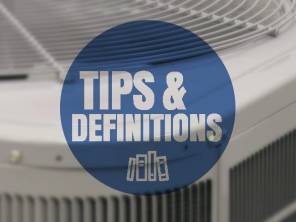As we head into Monsoon season, we may experience more power outages in Arizona than normal. The storms as well as the extreme heat are both common causes of Arizona’s blackouts.
But the thing to remember with power outages is that the outage itself isn’t exactly what causes harm, it’s the sudden surge of electricity when the power comes back on that can damage your appliances.
So how do you protect appliances from that surge?
Well, to start you can unplug your appliances until the electricity comes back on. But of course, you won’t always be home when a power outage occurs. Also, some larger appliances (like your A/C) are always plugged into the wiring of your home and disconnecting them may not be possible.
So, the best way to protect your appliances during a power outage is to install surge protectors.
Let’s take a look at how they protect your appliances as well as important features to look for in your surge protector.
How surge protectors prevent damage to your appliances
A surge protector is designed to monitor the flow of electricity that reaches your appliances.
The 2 surge protectors we’ll discuss in this article are:
- Point of use surge protectors– Plugs into a standard electrical outlet and connects directly to the appliance it protects.
- Whole-house surge protector– Connects to your home’s main electrical panel and protects all of your home’s appliances.
How a “point-of-use” surge protector works:
Normally, your appliance receives electricity directly from the socket. That electricity travels through the appliance’s “live” or hot wire. But a surge protector is a buffer between the socket and the appliance and contains an extra wire called the “ground” or earth wire.
When there is an electrical surge, a tiny device inside your surge protector “wakes up” and redirects the extra voltage to the ground wire, away from your appliance.
Note: Surge protectors and “power strips” look essentially the same. Most power strips really just offer multiple sockets to plug into but no real protection. Some, however, offer basic protection by cutting off power to an appliance if it detects a surge.
Make sure that your device specifically says that it offers surge protection. Learn more about power strips vs. surge protectors.
How a whole-house surge protector works:
A whole-home surge protector basically works in the same way a point-of-use surge protector does: it monitors the electric current and blocks or diverts the extra voltage.
The difference is that a whole-home surge protector is installed at your home’s main electrical panel to block surges that may come from the utility grid, a nearby lightning strike, etc.
Whole-house surge protectors are great because they protect larger appliances that can’t be protected with a point-of-use surge protector-like your central air conditioner.
Features to look for in a surge protector
Joules
Surge protectors don’t last forever. They come with a limited amount of joules that it can absorb before they stop working properly and need to be replaced.
When looking for a surge protector, the higher the joules, the better. More joules means longer protection.
VPR
The VPR (voltage protection rating) measures how much voltage is let through to the appliances the device protects. The lower the VPR, the better.
Response time
The response time measures how long it will take for the device to “snap” into action once a surge is detected. Obviously, the lower response time, the better. We suggest only choosing surge protectors that have a response time of 1 nanosecond or less.
Warranty
Some manufacturers offer coverage or partial coverage for damage to appliances if a power surge comes through. Look for surge protectors that offer this and look specifically for what is and isn’t covered.
Ready to install your surge protector? Get help from an AZ electrician
If you have questions about finding the surge protection that is best for you or if you need help installing your whole-house surge protectors, we’re here to help.
Just call George Brazil today to schedule your appointment with a certified, reliable Arizona electrician.

